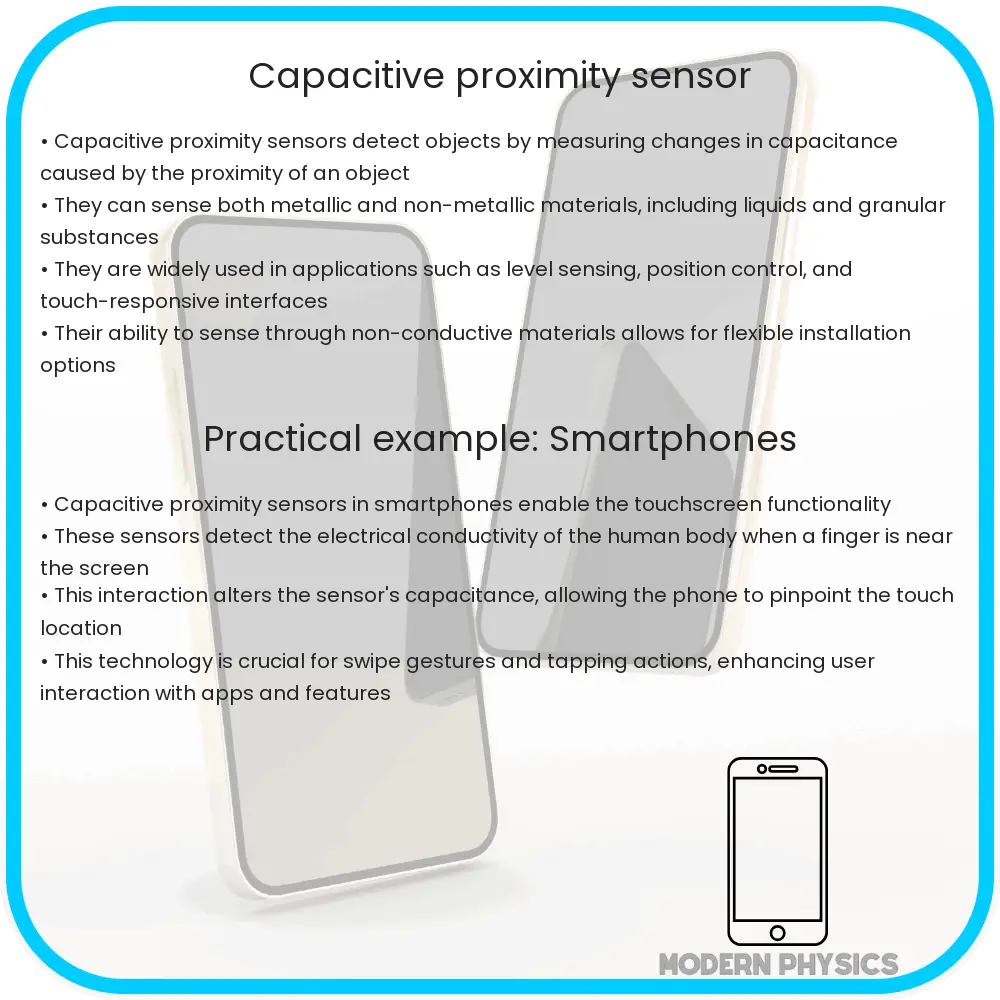Explore capacitive proximity sensors: key insights on accuracy, sensitivity, durability, and their evolving role in diverse industries.

Understanding Capacitive Proximity Sensors
Capacitive proximity sensors are a pivotal component in modern technology, offering precise, non-contact detection of metallic and non-metallic materials. These sensors function on the principle of capacitance—the ability of a system to store an electrical charge. Understanding the accuracy, sensitivity, and durability of these sensors is essential for applications ranging from industrial automation to consumer electronics.
Accuracy of Capacitive Proximity Sensors
The accuracy of capacitive sensors is determined by their ability to detect objects at specific distances without deviation. High accuracy ensures consistent performance in applications like fluid level measurement and material handling. Factors affecting accuracy include sensor design, operating frequency, and environmental conditions.
Sensitivity Aspects
Sensitivity in capacitive sensors refers to their ability to detect minor changes in capacitance caused by the proximity of a target object. This feature is crucial for detecting materials with low dielectric constants, such as plastics or glass. Sensitivity adjustment can be essential for differentiating between closely spaced objects or operating in environments with fluctuating conditions.
Durability and Environmental Robustness
Durability is a critical factor, especially in industrial environments. Capacitive proximity sensors are designed to withstand harsh conditions, including exposure to dust, moisture, and extreme temperatures. Materials like stainless steel and PTFE (Polytetrafluoroethylene) are often used for sensor construction to ensure longevity and reliability.
Applications in Diverse Industries
Capacitive proximity sensors find applications across various industries. In manufacturing, they are used for controlling machinery and detecting the presence or absence of parts. In the consumer sector, these sensors enable touch-sensitive interfaces in devices like smartphones and home appliances. The automotive industry utilizes them for fluid level monitoring and parking assistance systems.
Each application demands specific sensor characteristics in terms of range, sensitivity, and environmental resistance. Understanding these aspects allows for the optimal selection and implementation of capacitive proximity sensors in any given application.
Technological Innovations and Future Trends
Technological advancements continue to enhance the performance of capacitive proximity sensors. Innovations in material science and electronics are leading to smaller, more energy-efficient, and highly sensitive sensors. Future trends point towards the integration of smart capabilities, enabling sensors to process and communicate data, paving the way for more autonomous and intelligent systems.
Challenges and Solutions
Despite their advantages, capacitive sensors face challenges such as interference from external electromagnetic fields and the need for frequent recalibration in changing environments. Solutions include shielded designs and sophisticated algorithms that adapt to environmental changes, ensuring consistent performance.
Customization and Adaptability
Another aspect is the customization of sensors for specific applications. Manufacturers are increasingly offering sensors tailored to unique requirements of different industries, such as food and beverage, pharmaceuticals, and automotive manufacturing. This adaptability enhances the efficiency and reliability of various processes.
Environmental Impact and Sustainability
With growing environmental concerns, the sustainability of sensor manufacturing and operation is gaining importance. Efforts are being made to use eco-friendly materials and to design sensors that consume less power, contributing to the overall reduction of the carbon footprint of technological solutions.
Conclusion
In conclusion, capacitive proximity sensors represent a vital technology in our increasingly automated and interconnected world. Their accuracy, sensitivity, and durability make them indispensable in a wide range of applications. As technology evolves, these sensors are set to become even more integrated into our daily lives, with smarter, more adaptive, and environmentally friendly features. Understanding their capabilities and limitations is key for innovators and end-users alike, as they harness these sensors to drive efficiency, safety, and technological progress.
